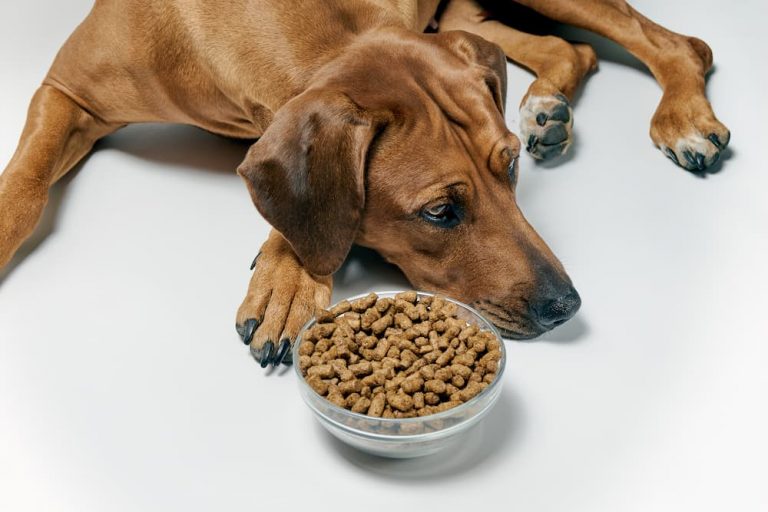It can be disheartening when your dog refuses to eat. You pour their favorite kibble into the bowl, only to watch them sniff and walk away. For many dog owners, a loss of appetite in their furry friend can be a source of stress and concern. A healthy appetite is key to maintaining a dog’s energy, vitality, and overall well-being. In this article, we’ll explore the common reasons behind a dog’s finicky eating habits and share strategies to encourage even the pickiest of eaters to enjoy their meals again.
Understanding Why Dogs Lose Appetite
Before diving into solutions, it’s important to understand why your dog might be avoiding food in the first place. Not every case of picky eating is problematic—sometimes, fluctuations in appetite are perfectly normal. However, a persistent lack of interest in food could signal a deeper issue. Distinguishing between occasional fussiness and more concerning patterns is crucial.

In many cases, a dog’s reluctance to eat could be tied to medical problems. Dental issues like gum disease or tooth pain might make chewing uncomfortable. Additionally, gastrointestinal problems, infections, and more serious diseases such as kidney failure or cancer can lead to a drop in appetite. Some dogs may also suffer from food allergies or intolerances, making certain meals unappealing or even painful. On the other hand, non-medical reasons like stress or anxiety can also play a role. Changes in routine, a new home, or the introduction of another pet might be disrupting your dog’s eating habits. And, believe it or not, some dogs simply grow bored of the same meal day after day, especially if they’ve been indulged with treats or table scraps.
Assessing Your Dog’s Feeding Habits
Once you’ve identified that your dog is refusing food, the next step is to assess their feeding habits more closely. Observe their behavior: How long has this issue persisted? Is it linked to a recent change in their environment or routine? Sometimes the reason is staring you right in the face—your dog might just be stressed out from the chaos around the house, or they could be tired of the same old kibble.
However, if your dog has been skipping meals for several days or seems lethargic or ill, consulting a veterinarian is critical. Medical problems can often be ruled out or treated early with the right care. It’s also important to take note of the type of food your dog is eating. Not all dog food is created equal—low-quality ingredients or food sensitivities might be causing your dog to reject their meals. A balanced, nutritious diet is key to maintaining a healthy appetite, so don’t overlook the importance of ingredient quality.
Practical Strategies to Encourage Eating
Once you’ve evaluated the situation and consulted a vet if necessary, it’s time to take action. One of the simplest but most effective strategies is to stick to a routine. Dogs thrive on predictability, and setting fixed feeding times can help regulate their appetite. When dogs are allowed to graze throughout the day, they can become indifferent to meals. Instead, offer food at regular intervals and remove the bowl after 20 minutes if your dog doesn’t eat. This teaches your dog that food won’t always be available and encourages them to eat when it’s offered.
If your dog is still turning up their nose at their meal, it might be time to experiment with different foods. Some dogs develop a preference for particular proteins like chicken, beef, or fish. If you’re feeding the same type of protein every day, consider rotating it to maintain interest. You can also mix wet and dry food to create a more enticing texture. Adding a small amount of dog-safe food toppers, such as cooked meat or bone broth, can enhance both the flavor and smell of their meal, making it more appealing.
Speaking of enhancing palatability, one trick that often works is to warm up your dog’s food. Warm food releases stronger aromas, which can stimulate your dog’s appetite. Another option is to adjust the texture by adding moisture to dry kibble—either with water or broth—to make the meal softer and easier to eat, especially if your dog has dental issues.
Reduce Stress and Anxiety
Sometimes the solution isn’t in the food but in your dog’s environment. Dogs, like humans, can lose their appetite due to stress and anxiety. Major life changes such as moving, the arrival of a new family member, or loud and disruptive environments can lead to a decrease in appetite. Creating a calm, distraction-free feeding space can make a significant difference. It’s also worth considering the use of calming aids, like pheromone diffusers, which can help alleviate anxiety and encourage eating.
Exercise is another factor that can influence your dog’s eating habits. Regular physical activity helps to stimulate hunger and improve digestion. A simple walk or a play session before mealtime can work wonders. Incorporating mental stimulation into mealtime can also help—using puzzle feeders or treat-dispensing toys can make eating more engaging and fun for a picky dog.
Behavior Modification and Training Techniques
Training your dog to develop better eating habits is another important step in overcoming picky eating. Positive reinforcement is a powerful tool. Reward your dog when they eat with praise, petting, or a favorite toy. This will help them associate mealtime with something positive, making them more likely to eat in the future. It’s also important to limit treats and table scraps—overfeeding treats can cause your dog to fill up on snacks and reject their regular food.
If you’ve decided to switch your dog’s food, make the transition gradually to avoid any digestive upset or resistance. Slowly mix the new food with the old over the course of a week to help your dog adjust.
Common Mistakes to Avoid
While it’s natural to want your dog to eat, there are some common mistakes to avoid. Forcing your dog to eat can lead to further anxiety or food aversion. It’s also important to avoid feeding from the table, as human food can disrupt your dog’s appetite for their own food and may lead to unhealthy eating habits. Finally, don’t ignore potential food allergies or sensitivities—if your dog continues to reject food, there may be an underlying cause that needs to be addressed.
When to Seek Professional Help
In some cases, despite your best efforts, your dog’s appetite may not improve. If this happens, it’s time to seek professional help. A persistent lack of appetite can signal a serious health issue, and a veterinarian will be able to run tests to identify any underlying problems. Conditions like gastrointestinal diseases or metabolic disorders can only be diagnosed with a thorough examination. In addition, consulting with a veterinary nutritionist may help create a specialized diet that caters to your dog’s unique nutritional needs.

Helping a picky dog rediscover their love for food can be a challenging journey, but with patience and the right strategies, it’s possible. By understanding the root cause of your dog’s picky eating, creating a consistent routine, and trying out new and engaging ways to serve food, you can improve your dog’s appetite and overall health. If you’re ever in doubt, don’t hesitate to seek the guidance of a vet. Remember, a happy, healthy dog starts with a well-balanced diet—and it’s never too late to get them back on track.

After 5 years in a high pace business management role, I partnered with an e-commerce developer to start building Dog Supplies Warehouse.
Our number one goal is to make sure all products are managed and delivered to our customers door fast and accurately.
